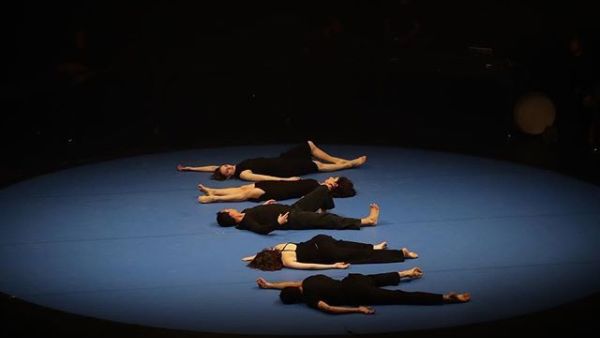The Beirut International Platform of Dance inaugurated its 15th edition Thursday night with Omar Rajeh’s “#minaret,” at their new performance space Citerne Beirut.
Featuring a cast of internationally acclaimed dancers, “#minaret” is an encounter between contemporary dance, video arts, a drone, and an evolving sound piece inspired by the classical musical heritage of Aleppo and sung verses from the Quran.
The piece is inspired by the minaret of the Great Mosque of Aleppo, once an iconic landmark of the Syrian city that is now in ruins. It aims to question how people resist and how the world faces images of destruction, deals with digital dissociation from humanity and the daily struggles of Aleppo’s people.
It first premiered at Italy’s 2018 Romaeuropa Festival, and will continue to tour internationally into 2020, stopping at the likes of the Athens Festival, the Moscow Dance Inversion International Contemporary Festival and the SPRING Performing Arts Festival in Utrecht.
BIPOD founder Rajeh was joined on stage by artistic director Mia Habis, Charlie Prince (Lebanon), Moonsuk Choi (South Korea), Antonia Kruschel (Germany) and Yamila Khodr (Argentina).
A live band plays the soundscape composed by Ziad El Ahmadie and Joss Turnbull, which blends dissonant, distorted versions of classical Arabic music into painfully mechanical noise.
The show begins in darkness, with the call for prayer sounding out. As the lights turn on the sound turns discordant and warped as the dancers hold their heads in pain. A drone flies over them as they dance in jerky, disjointed movements, isolating each movement in time to the clicks and crackles of the soundscape.
At times the dancers seem to be controlled by the drone like puppets, moving in sync. At other times the drone presses the dancers to the floor, while they struggle to get up.
The drone patiently watches and observes the struggles of the dancers - the way the world watches the horrors of war and poverty on the news without taking action.
Rajeh rolls out a table covered in blue paint, covering his hands in it.
As he interacts with the other dancers, their black clothes become marked in blue.
It’s possible the recurring color in the performance symbolized the blue hue often found in mosques and on protective items like evil-eyes.
Rahej marking his companions could be an honest attempt to protect them - or done in irony, to say that no amount of warding against evil will stop it from happening.
As the performance progresses, the dancers become angry and frustrated. Their movements are quicker, sharper and more aggressively executed before they circle the drone and stare in judgment.
The scene gives opportunity for each dancer to perform solo, before they all come together for a group section where they punch their fists downward, attacking an invisible foe. The quick footwork and precision of Choi’s movements truly shined in these sections.
The next section saw Choi and Kruschel perform a slow duet while the drone watched their intimate moment. The choreography was in greater focus during this scene, with Choi manipulating Kruschel’s body and movements with limited instruction, presenting flowing lines and complementary motion.
The group set up tablets and phones on a table, playing a video with screeching sounds as they roll the table toward the drone.
Things take an even darker turn as Choi strangles Rajeh with his own shirt and throws him around.
Rajeh paints the prone body of Prince in a dark blue before Prince comes alive and dances while the others circle him.
“#minaret” poses many questions and only answers some. While many of the beginning scenes hold some kind of cohesive narrative, the second half is less clear in its intention.
This is not necessarily bad, however, as the nature of contemporary dance is not to give the audience the answer on a golden platter, but rather to provoke views to mull over what they have witnessed.
This performance does just that.
This article has been adapted from its original source.








